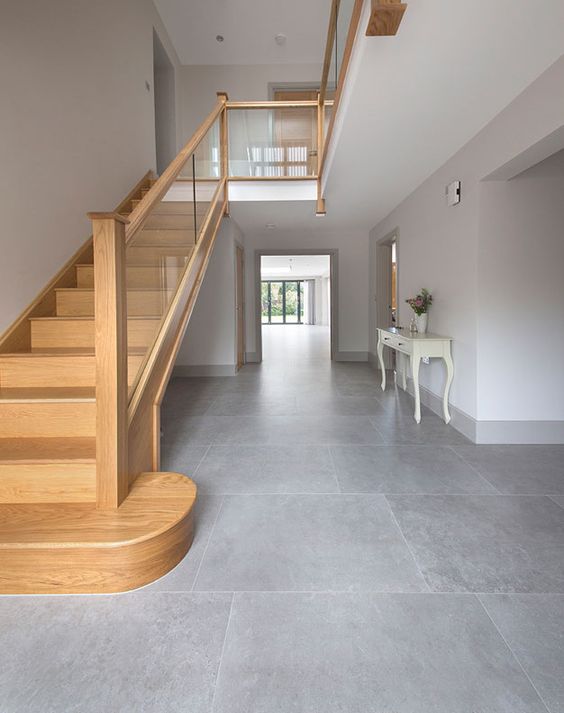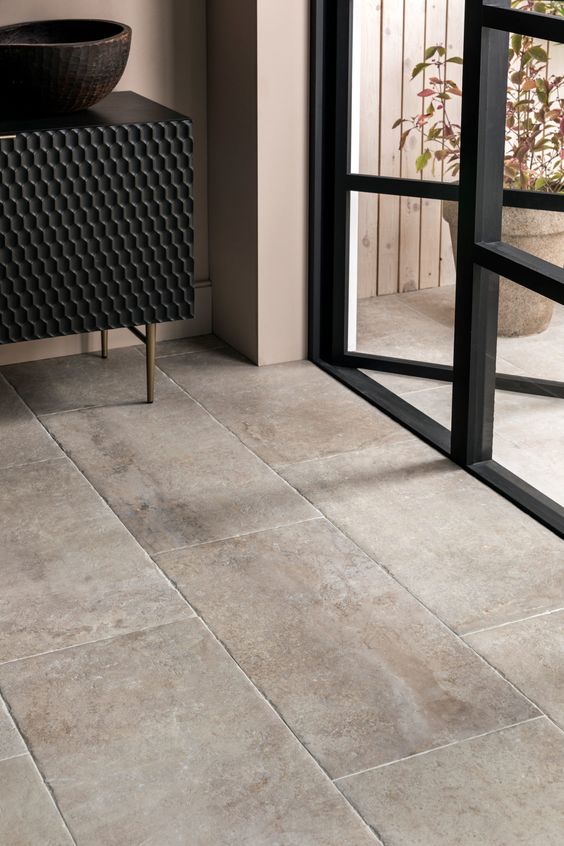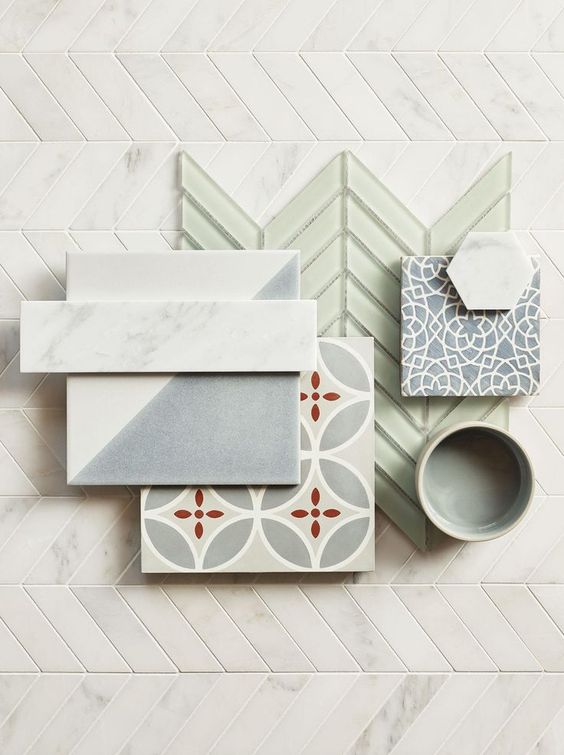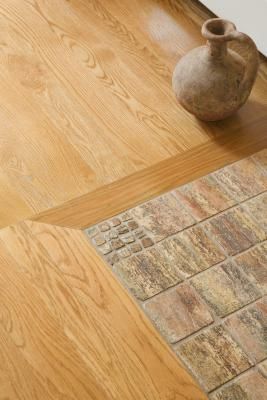When purchasing ceramic tile for a floor application consider these tried & true tips!
Subfloor – Ensure the thickness of the wood subfloor in the area you would like to tile. Be certain the subfloor will support the weight of the tile without deflection so the grout and tile do not break or crack.
Make sure the subfloor is level. A flat and level subfloor will ensure the tile and group line will stay square and true.

Two industrial tiler builder worker installing floor tile at repair renovation work
Porcelain, Ceramic, or Natural Stone which should I install? – Porcelain tile is the most durable and maintenance free product with fantastic visuals.
Ceramic tile is generally a residential, low traffic, and budget friendly product.
Natural Stone tiles are visually spectacular, durable, but do require some maintenance. They often require to be sealed before and after the grout is installed, and require general maintenance periodically because of the stone being porous.



The options are endless! If you like patterns, colours and/or various shapes tiles are for you!
Height levels between tile floors and other floor coverings – Always consider the total thickness of tile, setting materials, and subfloor compared to the height of flooring attached to the tiled area.
This is especially critical to consider when you are doing a renovation, as you may not be installing tile in the entire area, but for example how a bathroom will connect to a hallway.
You may reconsider which tile and subfloor you use, so the height variance will no longer be an issue.

Here’s an example of using a transition molding as the tiles and wood floor are different heights.
See us at Jenkins – The Flooring People for Tips + Tricks our experienced flooring professionals are here to help!


